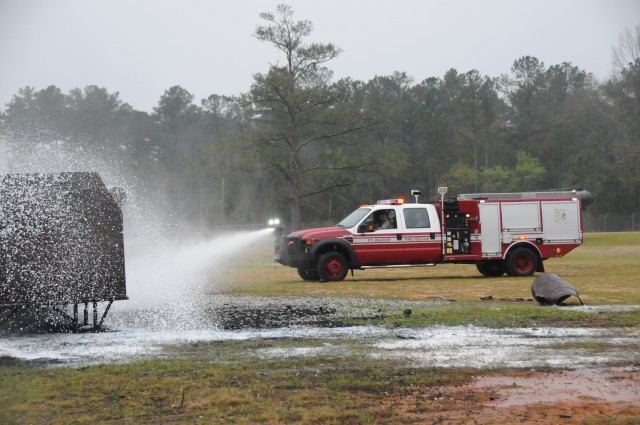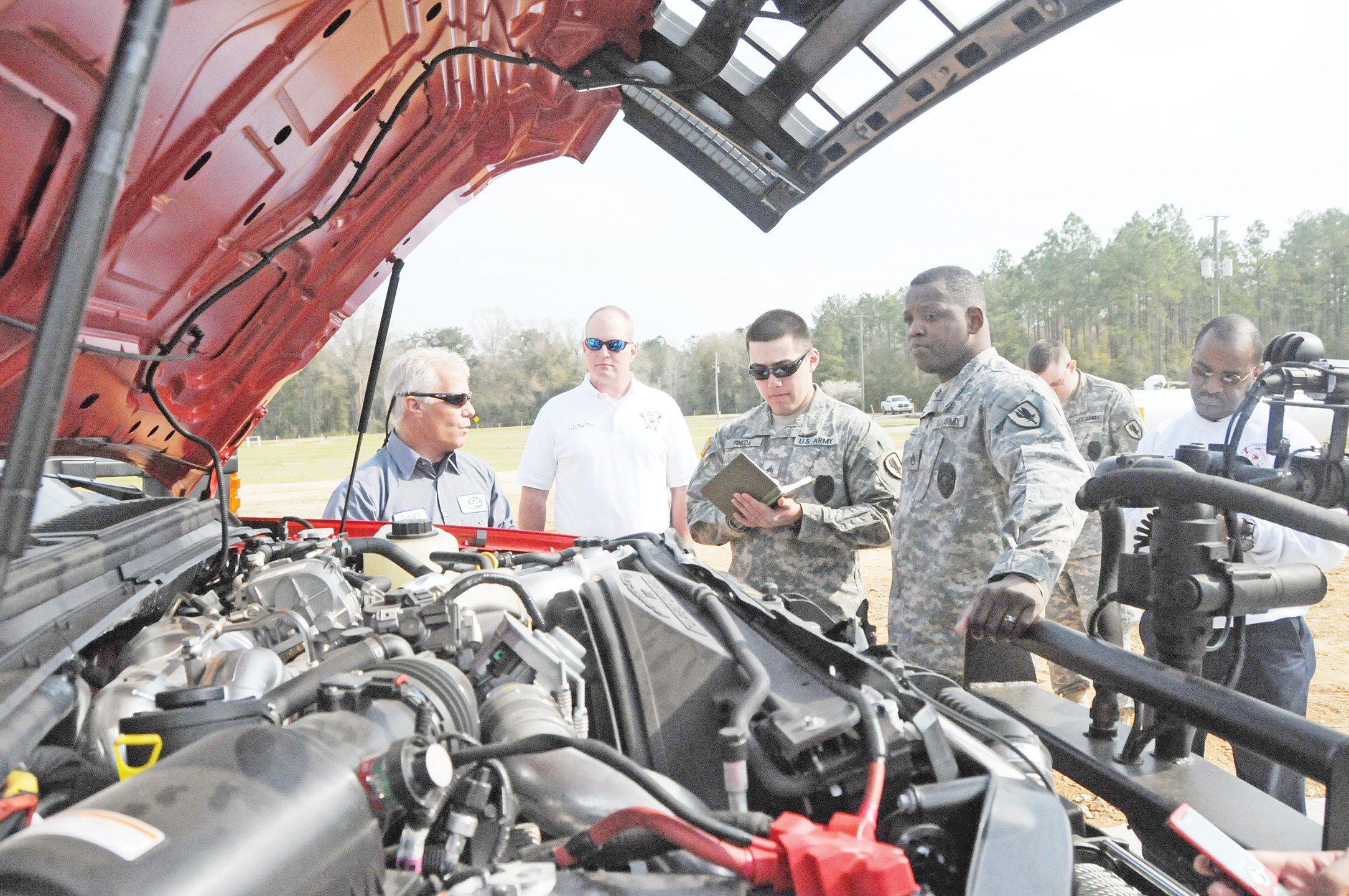FORT RUCKER, Ala. -- Fort Rucker Fire Department Soldiers and civilians received a new weapon in combating crash-related fires recently when the first of seven Rapid Intervention Vehicles arrived.
The vehicles were ordered in September to replace the 21-year-old Ameritek 1500L Military-Adapted Commercial Item, said Steve Collins, department chief.
"Due to the age of MACIs, they must be replaced to ensure the fire department can provide reliable fire protection for the pilot training that goes on at the stagefields," he said.
The new trucks require less maintenance, which increases their availability and reduces cost, said Shayne Brown, training captain and assistant fire chief.
The new vehicles come with many new tools, helping firefighters combat crash fires and complete rescue operations faster and more safely, he added.
One of these tools is dry-chemical dispensing hoses, which gives firefighters a third substance to combat fires in addition to the water and foam found on the MACIs, Brown said.
"It's a better fire-suppression agent. It provides a better blanket (than foam). Foam blows away when high winds (occur)," he said.
With the addition of the dry chemical dispenser, firefighters have 400 gallons of water, 50 gallons of foam and 200 pounds of dry chemicals at their disposal when approaching fire.
The RIVs hold less water than the MACIs they replace, "but that is not an indicator of the vehicles' firefighting (capabilities) associated with aircraft rescue firefighting," Collins said.
He noted the MACIs were also used in structural fires, necessitating a larger water tank.
Another tool firefighters can use is the ability to dispense two types of firefighting agents at the same time, Collins said.
In additional to dry chemical dispensers, the RIVs also contain front-mounted heat-sensing cameras, which allow firefighters to see any hot spots as they near a crash scene. It can also help locate any Soldiers who may have been ejected during an accident, Brown said.
The heat-sensing cameras are mounted on dispensing equipment, which allows firefighters to battle fires as they arrive at a crash scene, Collins said.
Staff Sgt. Fabian Montano, an operations officer, said firefighters still need to leave the vehicles to search for victims.
"Our mission is swipe and grab," he said.
The truck's design provides another benefit because all firefighters will be housed in a closed cab, unlike the MACIs, where some firefighters rode exposed to the elements. Brown said the closed cab protects riders from the outdoors, especially during the summer.
Montano said the closed cab provides another benefit.
"Firefighters will have better communication. I can look back and tell my rescuers what to do before we get there," he said, noting the MACI design did not allow this.
Overall, the new vehicles are a great addition for the department, Collins said.
"When aircraft accidents do occur, a quick response by the fire department is essential to the crew members (who) may be injured," he said. "The capabilities of the RIV (aid) the firefighters in providing the fastest and safest response in order to assist our helicopter pilots when they encounter difficulties during their training."




Social Sharing